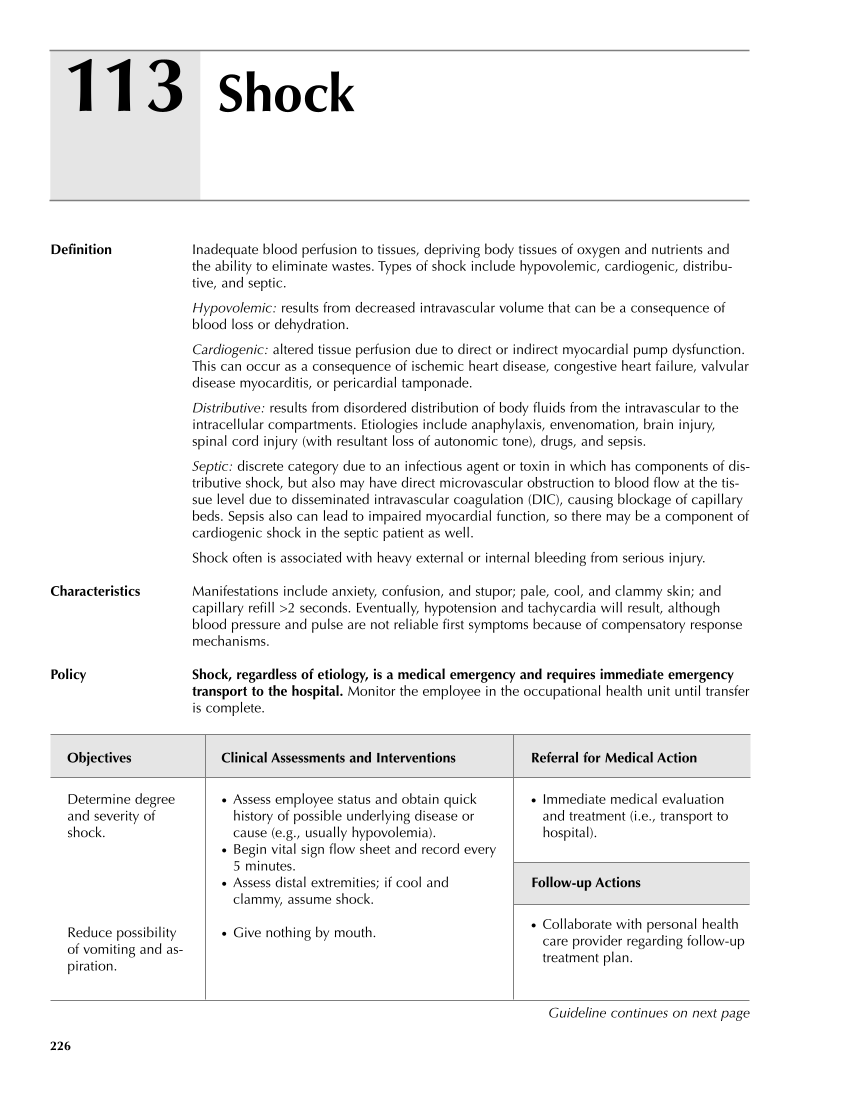113 226 Definition Inadequate blood perfusion to tissues, depriving body tissues of oxygen and nutrients and the ability to eliminate wastes. Types of shock include hypovolemic, cardiogenic, distribu- tive, and septic. Hypovolemic: results from decreased intravascular volume that can be a consequence of blood loss or dehydration. Cardiogenic: altered tissue perfusion due to direct or indirect myocardial pump dysfunction. This can occur as a consequence of ischemic heart disease, congestive heart failure, valvular disease myocarditis, or pericardial tamponade. Distributive: results from disordered distribution of body fluids from the intravascular to the intracellular compartments. Etiologies include anaphylaxis, envenomation, brain injury, spinal cord injury (with resultant loss of autonomic tone), drugs, and sepsis. Septic: discrete category due to an infectious agent or toxin in which has components of dis- tributive shock, but also may have direct microvascular obstruction to blood flow at the tis- sue level due to disseminated intravascular coagulation (DIC), causing blockage of capillary beds. Sepsis also can lead to impaired myocardial function, so there may be a component of cardiogenic shock in the septic patient as well. Shock often is associated with heavy external or internal bleeding from serious injury. Characteristics Manifestations include anxiety, confusion, and stupor pale, cool, and clammy skin and capillary refill 2 seconds. Eventually, hypotension and tachycardia will result, although blood pressure and pulse are not reliable first symptoms because of compensatory response mechanisms. Policy Shock, regardless of etiology, is a medical emergency and requires immediate emergency transport to the hospital. Monitor the employee in the occupational health unit until transfer is complete. Objectives Clinical Assessments and Interventions Referral for Medical Action Shock ● Immediate medical evaluation and treatment (i.e., transport to hospital). Follow-up Actions ● Collaborate with personal health care provider regarding follow-up treatment plan. Determine degree and severity of shock. Reduce possibility of vomiting and as- piration. ● Assess employee status and obtain quick history of possible underlying disease or cause (e.g., usually hypovolemia). ● Begin vital sign flow sheet and record every 5 minutes. ● Assess distal extremities if cool and clammy, assume shock. ● Give nothing by mouth. Guideline continues on next page
Purchased from OEM Press by (ge corporate access). (C) 2013 OEM Health Information, Inc. All rights reserved.












































































































































































































































































































































































































































